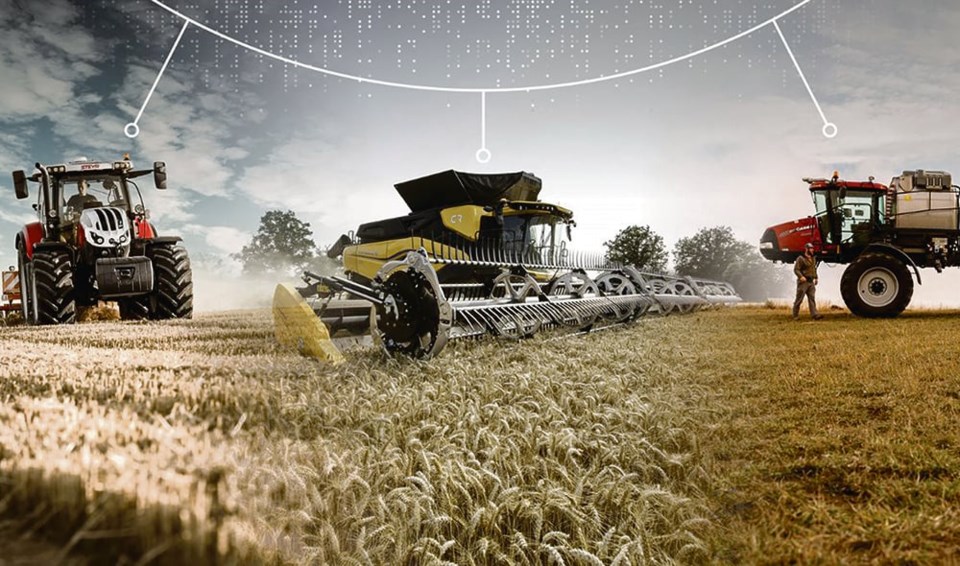WESTERN PRODUCER — As real-time digital connectivity from the field to the cloud increases in importance for farmers with the move to widespread precision farming, regular cellular service providers haven’t really been fully up to the task of supporting it in every location.
Most farmers have fields in at least some areas where cellular service is reduced or non-existent.
Earlier this year, John Deere announced it was partnering with Elon Musk’s SpaceX Starlink service to eventually ensure machines have uninterrupted service via satellite where cellular systems are weak.
In late April, the CNH brands Case IH and New Holland followed suit. The company announced it has partnered with Intelsat to provide uninterrupted connectivity via satellite.
Like Deere, CNH will begin by offering the satellite link for its equipment in Brazil where cellular service covers only a small fraction of the country.
“It will start in Brazil in the third quarter of this year,” says Marc Kermish, CNH’s chief digital and information officer.
“It will then move into North America, select countries in Europe and Asia in the first quarter of next year. And then a worldwide rollout in Q3.
“Ubiquitous connectivity is hard to come by in farming operations. The intent of satellite is to address those markets that are not served well by cellular. The key component is to enable precision farming abilities.”
Neither Deere nor CNH expect the satellite link to make cellular redundant, but rather complement it in areas where service is poor, allowing for uninterrupted data transfer.
“The satellite is not meant to replace cellular communication,” says Kermish.
“It’s really meant as an option. At the end of the day, cellular communication is still your most cost effective way to connect.
“In hilly areas you have drops, so in those areas I can see them (farmers) using satellite to help smooth that out. The way we’ve thought about connectivity is they can pick the solution they want. They could have cellular and satellite and roam between the two, whichever has the strongest signal.”
The service could also be used to do more than just connect machines to the cloud — it could also be set up to offer farm-wide wi-fi for general connectivity to the internet.
“They could beam a mesh wi-fi network across their farm, and our connectivity could work with that. They could have a satellite dish on the combine and through wi-fi connect to the tractor for the grain cart. So they don’t have to buy a dish for every single vehicle in paired operations. We’ll learn how they want to put it to use and what works best.
“With IntelSat we get access to three different layers of geo-satellite connectivity. You have a deep space layer, which is where telecommunications work, and it has the broadest coverage but some of the slowest speeds. You have a middle earth-orbit layer, which is where we’ll start with Intelsat. This is where you’re going to get 2Mb backhaul speed, which is more than enough to take agronomic and telematics data from the vehicles back to the cloud. Then, as they (Intelsat) grow their low-earth orbit, we can start to leverage that for real-time video streaming and other activities related to managing an autonomous farm mission.”
That video capability will be critical for use on fully autonomous equipment. It will allow farmers to see remotely in real-time the environment around working equipment.
“For us, we’re going to have between eight and 10 cameras on an autonomous vehicle,” he adds. “As we’ve talked with our farmers, they were like, hey, we want to see what’s going on, not just from the display or remote tracking from the vehicle. I want to be able to log in and see what the tractor sees.
“You’re going to get errors that the tractor is going to throw and it’s going to stop. So you can see what’s around that tractor to determine if you can remote start it or if you’re going to have to drive out and remove an obstacle.”
The necessary Intelsat hardware will be Available from CNH dealers when the service begins in Canada
“We’ll start as an aftermarket offering so they can put it on their existing fleet. They can move it between vehicles if they buy a second wiring harness. We want to make sure there’s portability. You don’t need 10 satellites for 10 tractors.
“We’re still finalizing pricing. There’ll be a cost for the antenna and there’ll be a monthly pricing model. I would say it will be similar to you see with cable internet connectivity if you have high-speed cable, on a monthly basis.”




